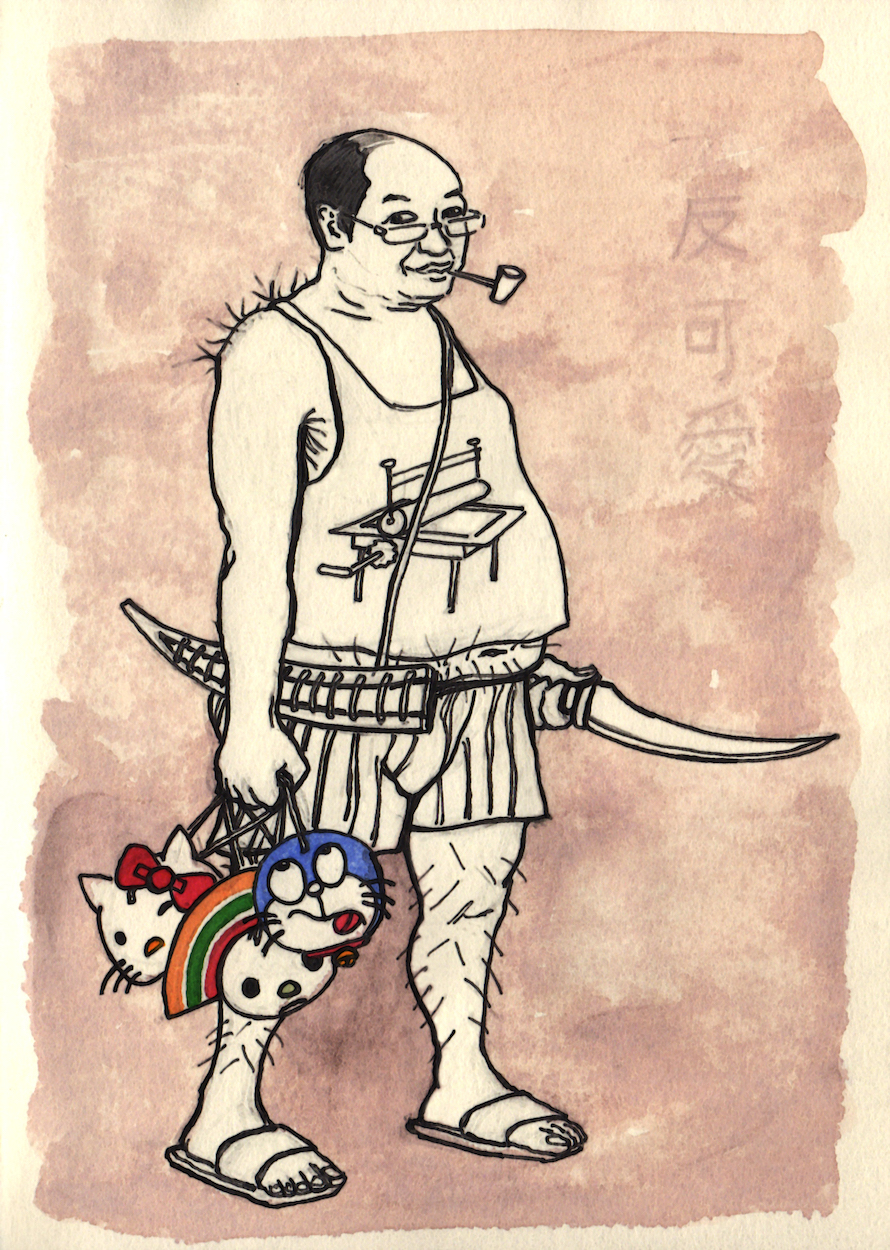by Brian Hioe
語言:
English
Photo credit: Ivan Gros
On November 13th, New Bloom editor Brian Hioe interviewed Ivan Gros regarding the Anti-Ke-ai Manifesto and an ongoing print exhibition at the MBMore Gallery concerning the manifesto. Their conversation is below.
Brian Hioe: First, could you introduce yourself for readers who might not know you?
Ivan Gros: I arrived in Taiwan ten years ago. I am a teacher and researcher at a university (I work on metaphorical processes). And at the same time, I am a printmaker. So naturally, because of those two activities, I wanted to mix thought and drawings…
BH: What do you see as the aims of the exhibition? Who are the artists represented? Can you talk a bit about their work exhibited here today?
IG: This exhibition is a way to remember the link between art and politics (which is not always so evident in Taiwan). We are three artists with sensibilities, convictions, styles, and histories which are very different…But we agree with this simple principle. Art must be a kind of reflection of society.
For example, with Xiao Ji (Lee Tek-khean, or 李迪權), these engravings are very interesting. He diverts Americans icons of superheroes and gives them other meanings, by mixing them with traditional Chinese culture. The cult of the body, which is slim and muscular and quite peculiar in our modern society, is ridiculed. The bodybuilding of superheroes is deconstructed and rebuilt with other codes, such as the codes of Chinese culture.
While Xiao Ji is irreverent with regard to the canons of beauty, Chen Hua-chun’s (陳華俊) works are more intimate. He talks about frustration and desire. This is also in a society highly aggressive regarding the body. But he speaks of his own wounds. He talks about his own experience of sexuality. It can be uncomfortable but deep, something that could be a source of misunderstanding.
For my own work, the link between politics and aesthetic is expressed through an allegory. This is represented by slugs with teeth persecuted by dental surgeons. Struggles are a very common structure of our representations. This can be applied to almost anything. class struggles, feminist struggles, species struggle, the fight for independence, etc. Many interpretations are possible.
BH: What was it that led you to this notion of ke-ai (可愛) being omnipresent in Taiwanese society? What do you think the effects of the proliferation of this concept? What’s more, what is it that led you to the notion of opposing the notion of ke-ai?
IG: Ke-ai is a social phenomenon. It’s a fact. People don’t stop to refer to this concept. But unconsciously, maybe because I’m a stranger, I’m more sensitive to this aspect. I shared my feelings with others, such as artists, friends, colleagues, and I realized, that they adopted the same point of view. Ke-ai is translated as cute…but it’s a reduction.
Before talking about the effects, I will talk about symptoms. This society is invaded and cannot defend itself. This is the symptom of an invasion on the soft power level. It’s a kind of cultural domination.
The problem is more complicated than it seems. Because the Taiwanese population is divided between fear and pride…and this division is found in art and culture, because there is a kind of partition. Otaku culture is popular and could be also interpreted as being anti-system culture pit against an elite culture, Chinese culture. We have not dealt with the problem from this angle but from the point of view of the infantilization of the masses.
BH: How was the Anti-Ke-ai Manifesto written? What is next, having written this manifesto?
IG: First, I just wrote a rough draft and talked with other artists about it. They disagreed on some points and so I modified the text after discussion.
After this exhibition, we hope to organize other exhibitions and allow other artists to express themselves with us if the project appeals to them.
BH: Is anything you would like to say in closing to readers? Not only Taiwanese readers, but also international readers?
IG: Art, literature, culture, are precious, not in the sense of elitist practice, but because it gives sense to our life, or it allows one to support the absence of a sense of existence. On this condition, you do not consider it a simple product, but you commit yourself. In this sense, the Anti-Ke-ai Manifesto is a commitment.
So come to see this exhibition, we will hold a little party on January 19th.
And come to the studio to play around with printmaking! It’s a good beginning. I do an initiation to engraving and etchings every Friday at the Firebox Printmaking Studio. You are welcome!




-Le-cauchemar-de-Denton-300-DPI-pour-NewBloom.jpg)